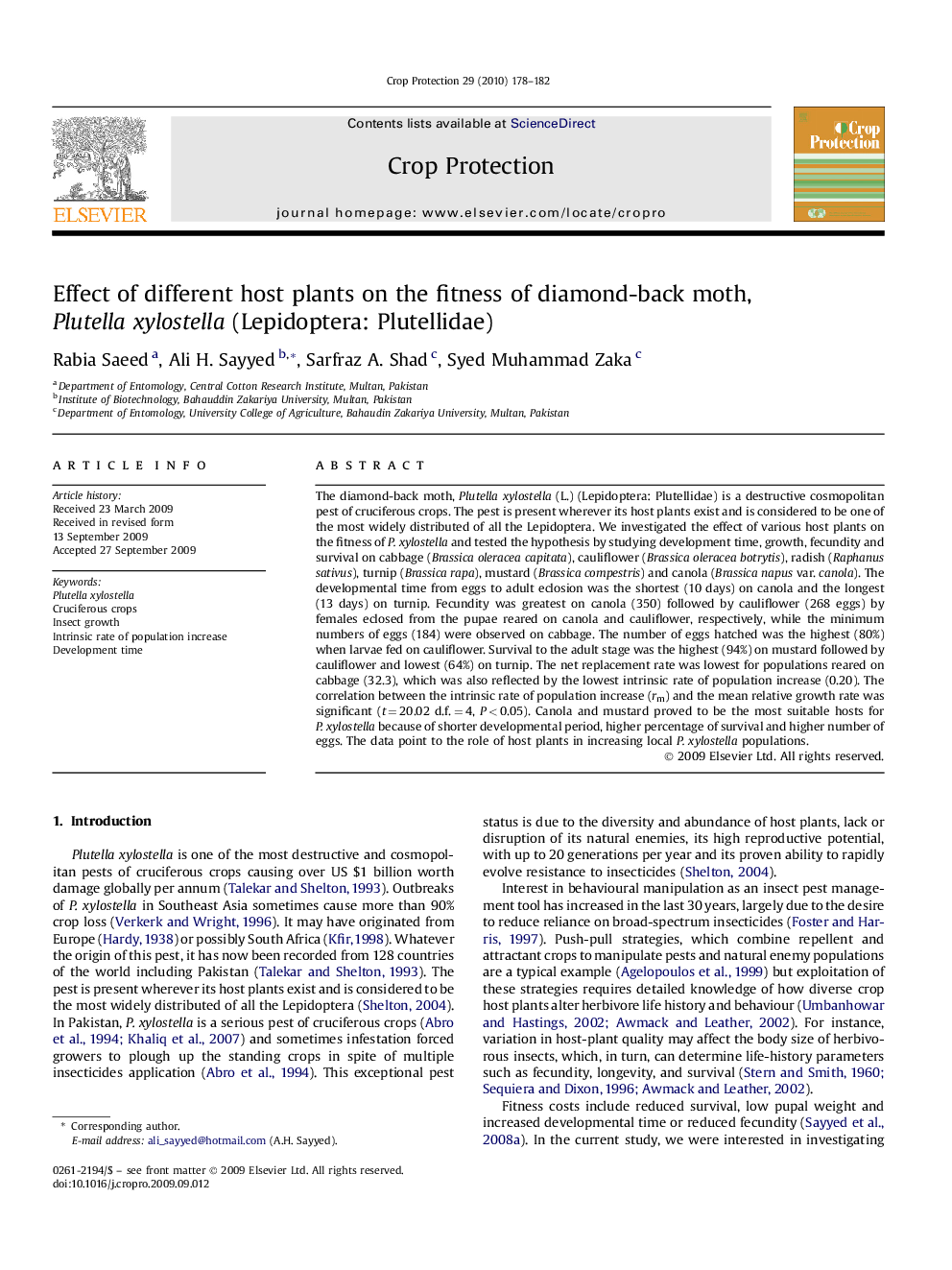| کد مقاله | کد نشریه | سال انتشار | مقاله انگلیسی | نسخه تمام متن |
|---|---|---|---|---|
| 4507252 | 1321346 | 2010 | 5 صفحه PDF | دانلود رایگان |
عنوان انگلیسی مقاله ISI
Effect of different host plants on the fitness of diamond-back moth, Plutella xylostella (Lepidoptera: Plutellidae)
دانلود مقاله + سفارش ترجمه
دانلود مقاله ISI انگلیسی
رایگان برای ایرانیان
کلمات کلیدی
موضوعات مرتبط
علوم زیستی و بیوفناوری
علوم کشاورزی و بیولوژیک
علوم زراعت و اصلاح نباتات
پیش نمایش صفحه اول مقاله

چکیده انگلیسی
The diamond-back moth, Plutella xylostella (L.) (Lepidoptera: Plutellidae) is a destructive cosmopolitan pest of cruciferous crops. The pest is present wherever its host plants exist and is considered to be one of the most widely distributed of all the Lepidoptera. We investigated the effect of various host plants on the fitness of P. xylostella and tested the hypothesis by studying development time, growth, fecundity and survival on cabbage (Brassica oleracea capitata), cauliflower (Brassica oleracea botrytis), radish (Raphanus sativus), turnip (Brassica rapa), mustard (Brassica compestris) and canola (Brassica napus var. canola). The developmental time from eggs to adult eclosion was the shortest (10 days) on canola and the longest (13 days) on turnip. Fecundity was greatest on canola (350) followed by cauliflower (268 eggs) by females eclosed from the pupae reared on canola and cauliflower, respectively, while the minimum numbers of eggs (184) were observed on cabbage. The number of eggs hatched was the highest (80%) when larvae fed on cauliflower. Survival to the adult stage was the highest (94%) on mustard followed by cauliflower and lowest (64%) on turnip. The net replacement rate was lowest for populations reared on cabbage (32.3), which was also reflected by the lowest intrinsic rate of population increase (0.20). The correlation between the intrinsic rate of population increase (rm) and the mean relative growth rate was significant (t = 20.02 d.f. = 4, P < 0.05). Canola and mustard proved to be the most suitable hosts for P. xylostella because of shorter developmental period, higher percentage of survival and higher number of eggs. The data point to the role of host plants in increasing local P. xylostella populations.
ناشر
Database: Elsevier - ScienceDirect (ساینس دایرکت)
Journal: Crop Protection - Volume 29, Issue 2, February 2010, Pages 178-182
Journal: Crop Protection - Volume 29, Issue 2, February 2010, Pages 178-182
نویسندگان
Rabia Saeed, Ali H. Sayyed, Sarfraz A. Shad, Syed Muhammad Zaka,